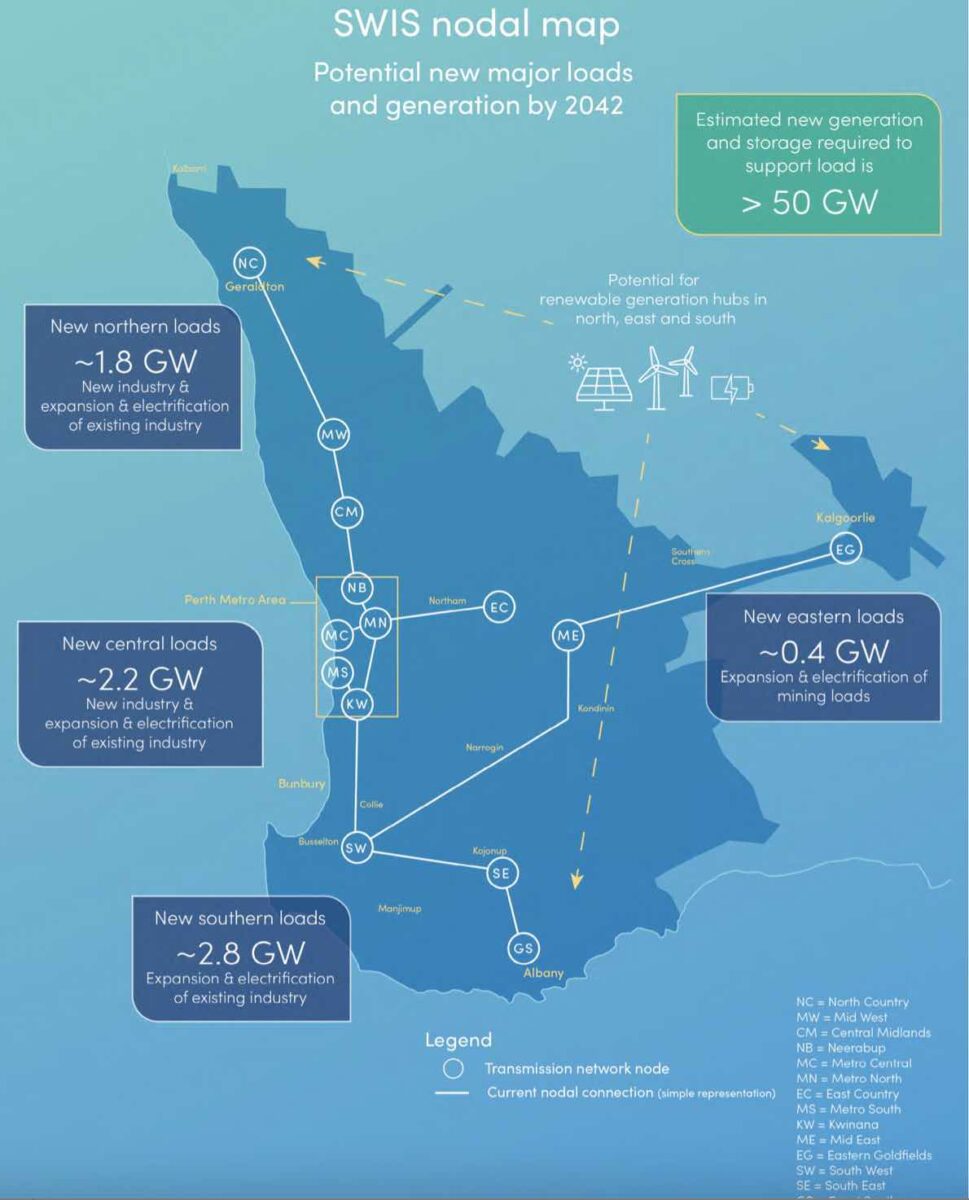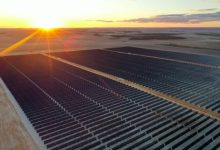Western Australia is planning a massive switch to large-scale solar and storage in its grid as part of a hugely ambitious vision to build 50GW of new energy capacity in just 20 years.
The new capacity is needed, the state Labor government says, to supply an anticipated surge in demand for power from electrification, new green industries, critical minerals and renewable hydrogen, and it has allocated $126 million in the coming year to kick-start work on the network needs for its ambitious plans.
The initial modelling expects an additional 7.2GW of new industry electricity demand over the next two decades which would require up to 51.1GW of new generation and storage capacity – almost 10 times the amount currently on the South West Interconnected System (SWIS), its main grid.
The Demand Assessment report suggests that half of that anticipated new demand will emerge in the next decade, hence the need to fast-track the planning for up to 4,000kms of new transmission works and to create new renewable energy hubs in the north, south and east.
It is the modelling of what the state could build in terms of new energy capacity that catches the eye, particularly as the government plans to retire the rest of its state-owned coal fleet by 2030.
The report suggests the overwhelming majority of this new generation capacity is large-scale wind and solar (41.8 GW) “as these are the most commercially viable technologies.”
To put this in some perspective, the state’s entire large scale generation capacity in 2022 was 5.9GW, with just 1.2GW of this being large scale wind and solar, and less than 150MW of this solar.

But the report’s modelling says that large-scale solar – paired with long duration energy storage (LDES) – will be the most cost efficient form of firmed renewable generation.
It says this combination is expected to be built across the SWIS, even in the south of the state where it suggests that up to 11.1GW of solar could also be installed.
Its modelling indicates that wind generation build should occur across the SWIS to access diverse wind profiles over the day and year to maximise the availability of renewable generation at any one time.
The storage modelling is also interesting. It considers two, four and eight-hour duration lithium-ion batteries, followed by pumped hydro for longer duration storage after 2030, although it says that might be difficult due to the state’s topography (lack of hills in the south west), and climate.
“If these (pumped hydro) technologies do not eventuate, larger quantities of shorter duration storage technologies such as batteries may be required,” it notes. There will be some new gas generation, but the report concedes this could be trumped by battery and hydrogen storage technologies.
The scale of what is being considered is really quite remarkable, particularly in a state that already boasts the biggest isolated grid in the world. But it is testament to the opportunities from the state’s wind and solar resources, its mineral riches and the potential for green industry and green hydrogen production.
“The SWIS cannot rely on other electricity systems to support it, so having a strong transmission backbone is critical for reliable supply,” state energy minister Bill Johnston said in a statement.
“An expanded grid is the most cost-efficient way of supporting decarbonisation as it can reach further for wind and solar.”

The report makes little or no mention of rooftop solar, already a dominant player in the local grid, apart from noting that households operating within a virtual power plant (linked storage devices) may only play a limited role in the firm capacity.
It also makes no mention of electric vehicles, and the role that they could play, but this also talks to the sheer scale of what is being contemplated.
“Electrification of industries, transport and homes is key to reducing greenhouse gas emissions,” Johnston writes in the report.
“Western Australia has some of the best and most reliable renewable energy resources on the planet. But having world-leading renewable energy is only one piece of the puzzle – it needs to be connected to where it will be used.”
The transmission work is envisaged to occur in three stages, with the first focusing on upgrading the main transmission line heading north to Perth, boosting the grid in industrial areas to the south, and building two new lines to the south east and south west.
Subsequent stages include a new line to the Goldfields, and more capacity both to the north and south of Perth to support the significant renewable energy hubs that are planned.










